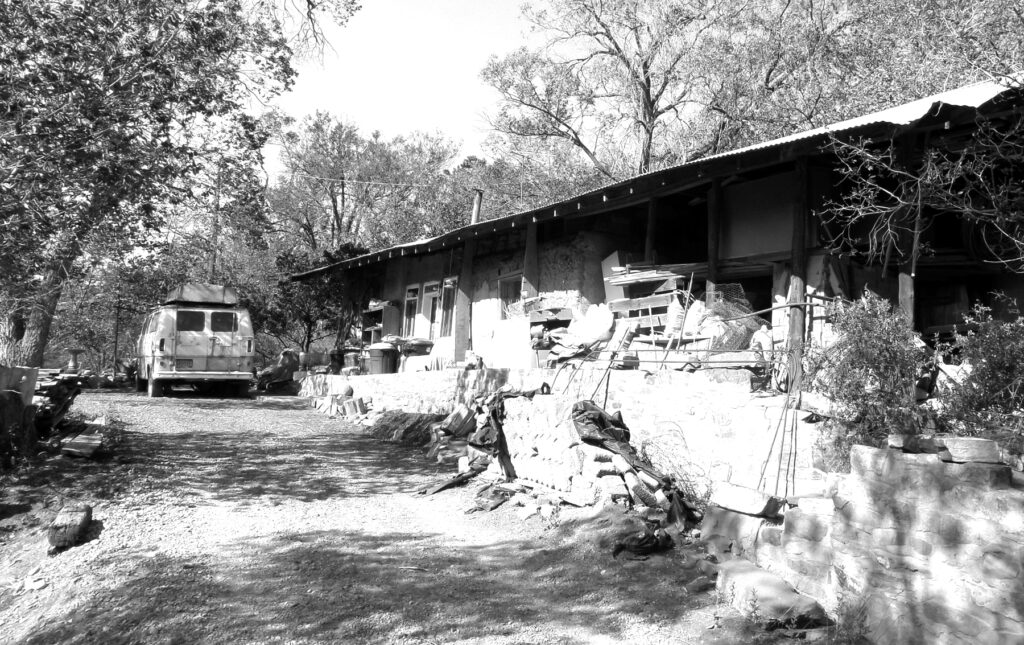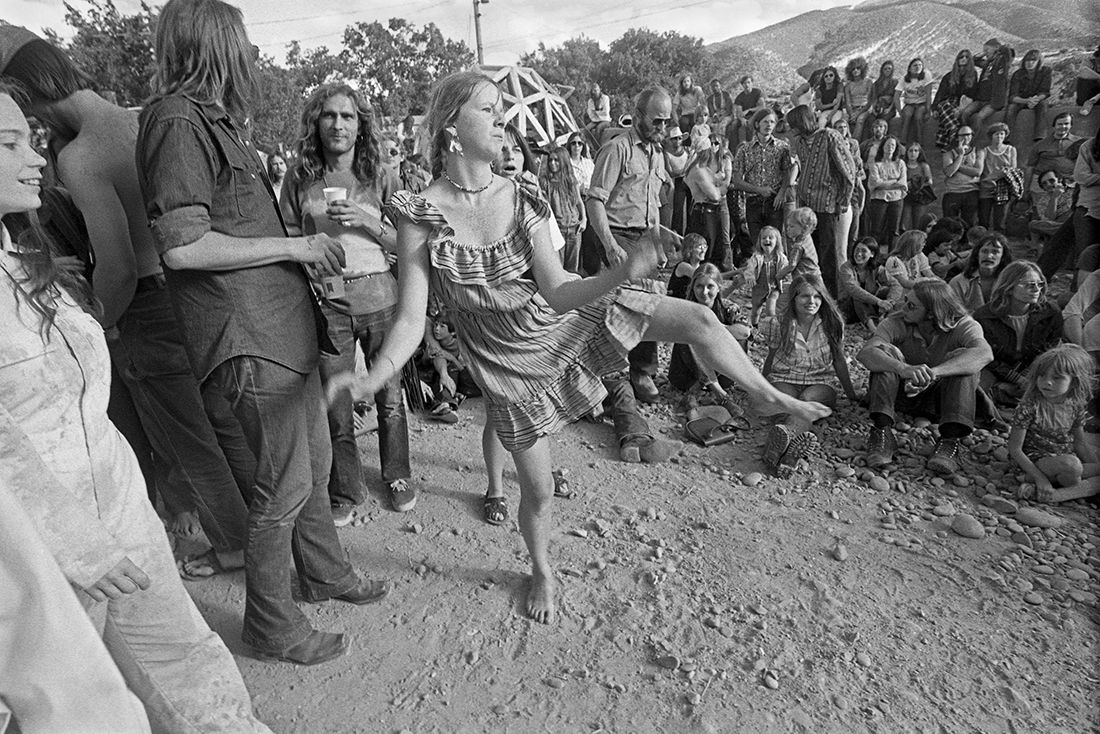How long did you think it would take me to find a good true-crime story in my new digs, the tiny village of Placitas in northern New Mexico? Yeah, well, I never bogart a good yarn. This’ll blow your mind.
In the 1960s and ’70s, Placitas was a far-out satellite in the hippie universe, man. Literally.
At the groovy height of the Love Generation, hundreds of long-haired, seldom-washed, sandal-footed kids flocked to communes in this northern New Mexico village to escape society’s rules, smoke a little bud, catch some rays, grow their own food, and seek the meaning of life. They lived in yurts, adobe shacks, geodesic domes, and a handful of communes with names like Sun Farm, Freeform, and Long John’s Valley nestled in the piñon hills—or Domesa, just across the road from my house. Everything was copasetic.
Ulysses S. Grant was the main man at the Lower Farm commune east of town. The friendly, slightly insane Grant claimed to be the reincarnation of the famous Civil War general and 18th president (a fact that he believed entitled him to free stamps at the Placitas post office and a federal pension). Grant also ran for New Mexico governor as a Republican in 1969, appearing for cameras in Civil War-style pants and riding a white horse named Blue.

But the mellow got harshed in 1970. As more drugs and less idealistic people moved in, the Placitas utopia grew funky. Reports vary: Some say a few hippies reportedly wanted to take over Grant’s Lower Farm commune and others say it was a simple argument over communal furniture. Either way, Grant fought back.
On December 1, Grant borrowed a gun and went hunting for his enemies. In a matter of minutes he fatally shot two men, Robert Copeland and George Ornas, and wounded a third. Then Grant, his wife, and toddler daughter vanished. Local cops and the FBI were flummoxed. The murderous hippie had disappeared into thin air. Literally outta sight, man.
Eighteen years later, the mystery broke.
In the rubble of a house fire near Bonner’s Ferry, Idaho, deputies found two charred bodies. Both had been shot in the back of the head and the fire intentionally set. In a nearby barn, investigators found more than a thousand thriving marijuana plants—the biggest indoor pot farm Idaho had ever seen—along with a cache of assault weapons, machine guns, and rifles with night-vision scopes. They also found booby traps throughout the facility, later estimated to have produced almost $2 million worth of pot every month.
But who were the dead people? Were their killers rival pot traffickers? Definitely not cool, dude.
Not much remained of the victims, so a forensic odontologist was called in. He used teeth to identify one body, a woman who might have been married to a dude named Donald Waskey—a suspect in two old New Mexico killings. But the frustrated heat needed to know for sure.
Then they caught a lucky break: Dental records showed Waskey had been fitted with an unusual metal crown that would have survived the intense heat of the arson fire. But it wasn’t found with the skull.
So the forensic odontologist and a team of deputies returned to the charred rubble and sifted through the ashes for hours. Miraculously, after four hours, they found the crown. Waskey—the hippie guru killer from Placitas— and his wife Helen (aka Mr. and Mrs. Ulysses S. Grant) were positively identified.
The Universe giggled, man. A double killer dude who got away was killed in a double killing by some other dudes who got away. Nobody has ever been arrested for the Waskeys’ murders.
Bummer.
Ron Franscell is the bestselling author of 18 books, including The Crime Buff’s Guide to the Outlaw Southwest, part of a crime-history travel series for buffs who like to get out.
Cover image of a communal party in Placitas NM by Robert D’Alessandro © 1972, courtesy of the New Mexico History Museum/Palace of the Governors photo archive.
